|
Great Sand Dunes NPP has many partners that assist in protecting the entire Great Sand Dunes ecosystem, support historical and scientific research, and help provide for public enjoyment and education of these diverse resources. 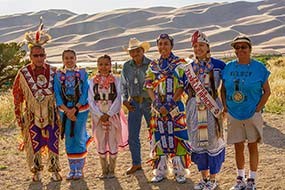
NPS/Patrick Myers Western National Parks AssociationIn partnership with the National Park Service since 1938, WNPA advances education, interpretation, research, and community engagement to ensure national parks are increasingly valued by all. Proceeds from park store sales helps to fund visitor center exhibits, cultural programs, and more. Shop WNPA online for Great Sand Dunes products. 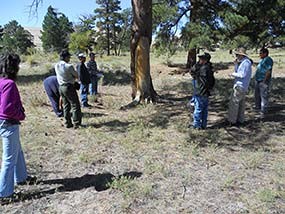
NPS Photo Friends of the DunesFounded in 1989, Friends of the Dunes supports cultural, educational, and 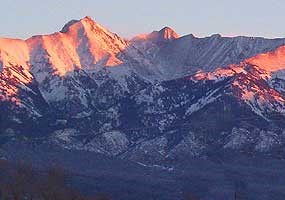
NPS Photo by Patrick Myers US Forest Service Great Sand Dunes National Park and Preserve are surrounded on the north, south, and east by lands managed by the US Forest Service, including the Rio Grande National Forest (west side of the Sangre de Cristos) and the San Isabel National Forest (east side of the Sangre de Cristos). Eight 14,000' peaks and many other peaks, valleys, alpine lakes and streams are found within these two national forests of the Sangre de Cristo Mountains. 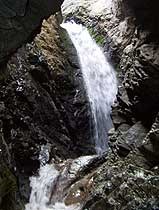
NPS Photo Bureau of Land ManagementThe BLM manages lands near the park, including Zapata Falls and Blanca Wetlands. 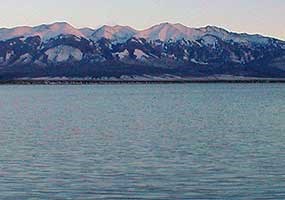
NPS/Patrick Myers Colorado Parks and Wildlife San Luis State Park features a large natural lake. San Luis Lakes State Wildlife Area protects a wetland complex adjacent to Great Sand Dunes National Park. San Luis Lakes are part of the Great Sand Dunes' wetland system called the sabkha. Colorado Parks and Wildlife also manages wildlife in the state of Colorado, including listing of threatened or endangered species, hunting permits, etc. 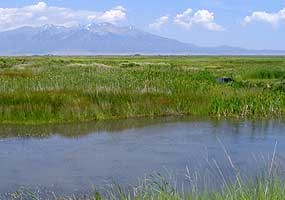
NPS/Scott Hansen US Fish and Wildlife Service Because of its many wetlands and strategic location for many unusual migratory birds, the San Luis Valley is home to three national wildlife refuges. Baca NWR was created in 2004 as part of the expansion of Great Sand Dunes National Monument into a national park and preserve, protecting the entire natural hydrological system of the Great Sand Dunes. It is adjacent to the national park on the western boundary. Alamosa NWR is located a few miles southeast of Alamosa, Colorado. It features wetlands along the Rio Grande River. Monte Vista NWR is south of Monte Vista, Colorado. This refuge contains many restored or enhanced wetlands associated with agricultural lands. It is one of the hotspots in the valley to view thousands of sandhill cranes each spring and fall. 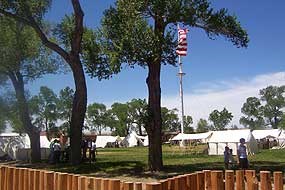
NPS/Patrick Myers Fort Garland Adobe buildings have been reconstructed to their original 19th century appearance at this important historic site in the town of Fort Garland, Colorado, on US Highway 160. Dioramas, exhibits, tents and teepees, and scheduled living history events make this a good place for all ages to learn about this era. Browse the Colorado Historical Society's web pages on Fort Garland for details. 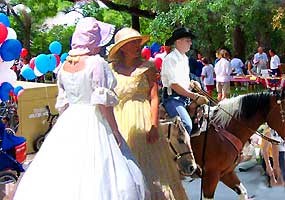
NPS Photo Alamosa County and Saguache County, Cultural and Other AttractionsGreat Sand Dunes National Park and Preserve is situated in Saguache County and Alamosa County. The closest town to the park and its mailing address is Mosca, Colorado. From western pioneer festivals and parades to American Indian dances and Hispanic heritage events, the San Luis Valley has a diverse heritage and an eclectic ambiance that is reflected in its architecture, art, and cuisine. Follow the links above to official tourist information pages for details on cultural and other attractions in these counties. 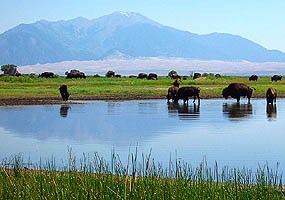
NPS/Patrick Myers The Nature Conservancy and Ranchlandsmanage the Medano-Zapata Ranches in and adjacent to the national park. Within the national park, the Conservancy manages a herd of over 1500 bison. 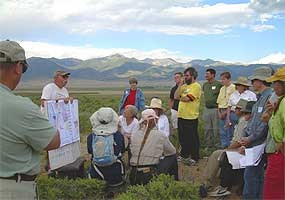
Photo by Erich Schwiesow, courtesy Colorado Field Institute 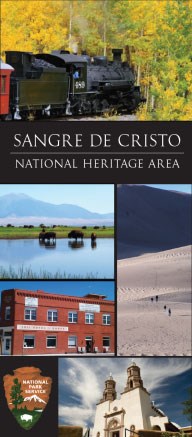
Sangre de Cristo National Heritage Area Sangre de Cristo National Heritage AreaThe mission of the Sangre de Cristo National Heritage Area is to promote, preserve, protect,and interpret its profound historical, religious, environmental, geographic, geologic, cultural, and linguistic resources. These efforts will contribute to the overall national story, engender a spirit of pride and self-reliance, and create a legacy in the Colorado counties of Alamosa, Conejos and Costilla.works to preserve the diverse cultural heritage of the San Luis Valley. National Heritage Areas are places where historic, cultural, and natural resources combine to form cohesive, nationally important landscapes. A National Heritage Area is designated by Congress and intended to encourage historic preservation and an appreciation of the history and heritage of the area. To become designated, the landscape must be a nationally unique natural, cultural, historical or scenic resource and it must be significant to the national story of the greater United States. 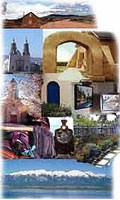
Photo collage courtesy of Los Caminos Antiguos Scenic and Historic Byway Los Caminos Antiguos Scenic and Historic BywayPart of the national system of scenic and historic byways, Los Caminos Antiguos gives the traveler a taste of the diverse cultural and natural resources of the San Luis Valley. From historic adobe churches in the southern part of the valley, to a US military fort, to an organic quinoa farm near Mosca, the valley's rich heritage comes to life. The route goes from Cumbres Pass in the San Juan Mountains, through the southern part of the valley, past the Great Sand Dunes, west past San Luis Lakes to Highway 17, and finally south to Alamosa. Travel either direction on the byway and any part of it. Distinctive signs along the route interpret many natural and cultural points of interest. Restaurants, shops, museums, and historic sites on the byway also provide resources for travelers. |
Last updated: November 18, 2021
